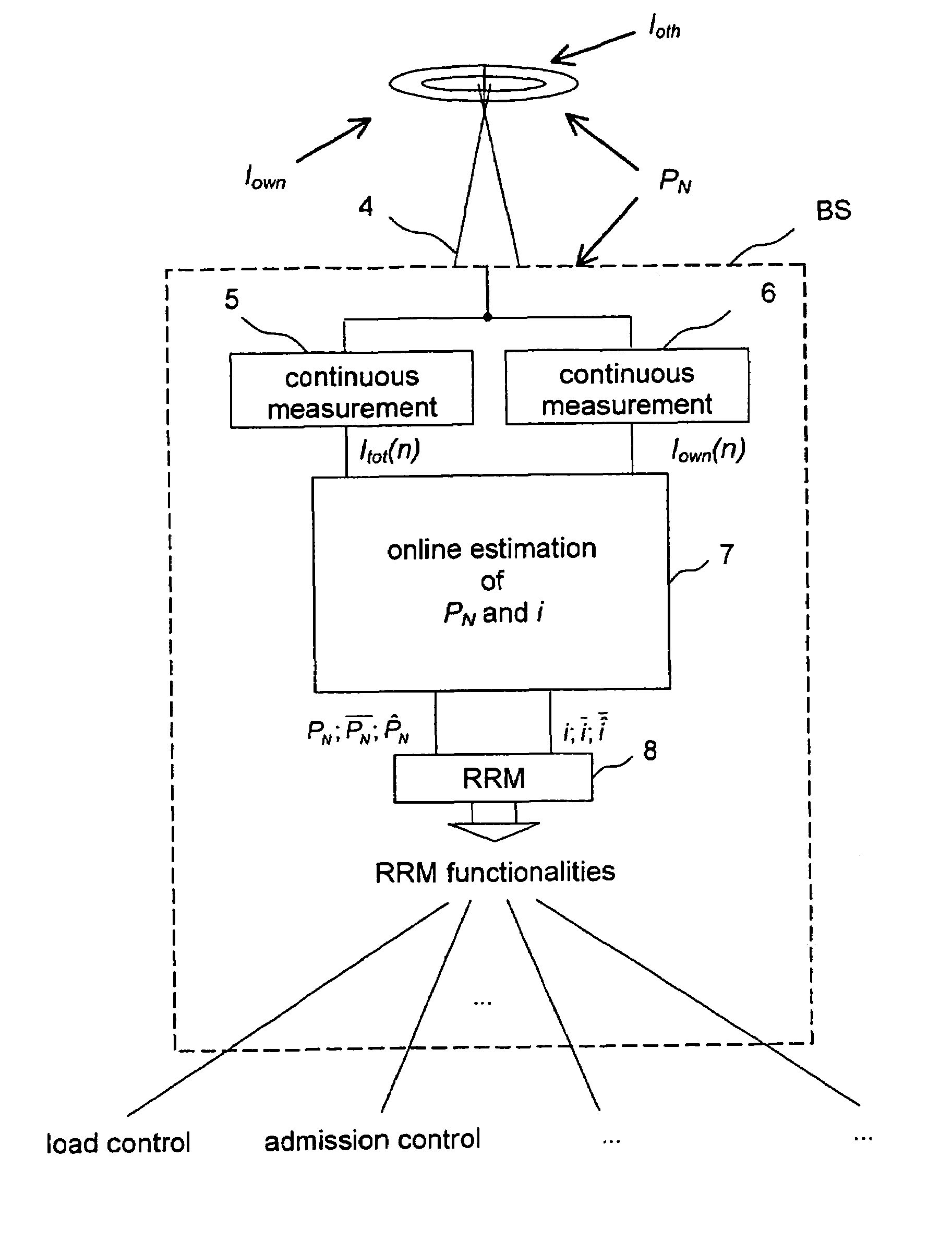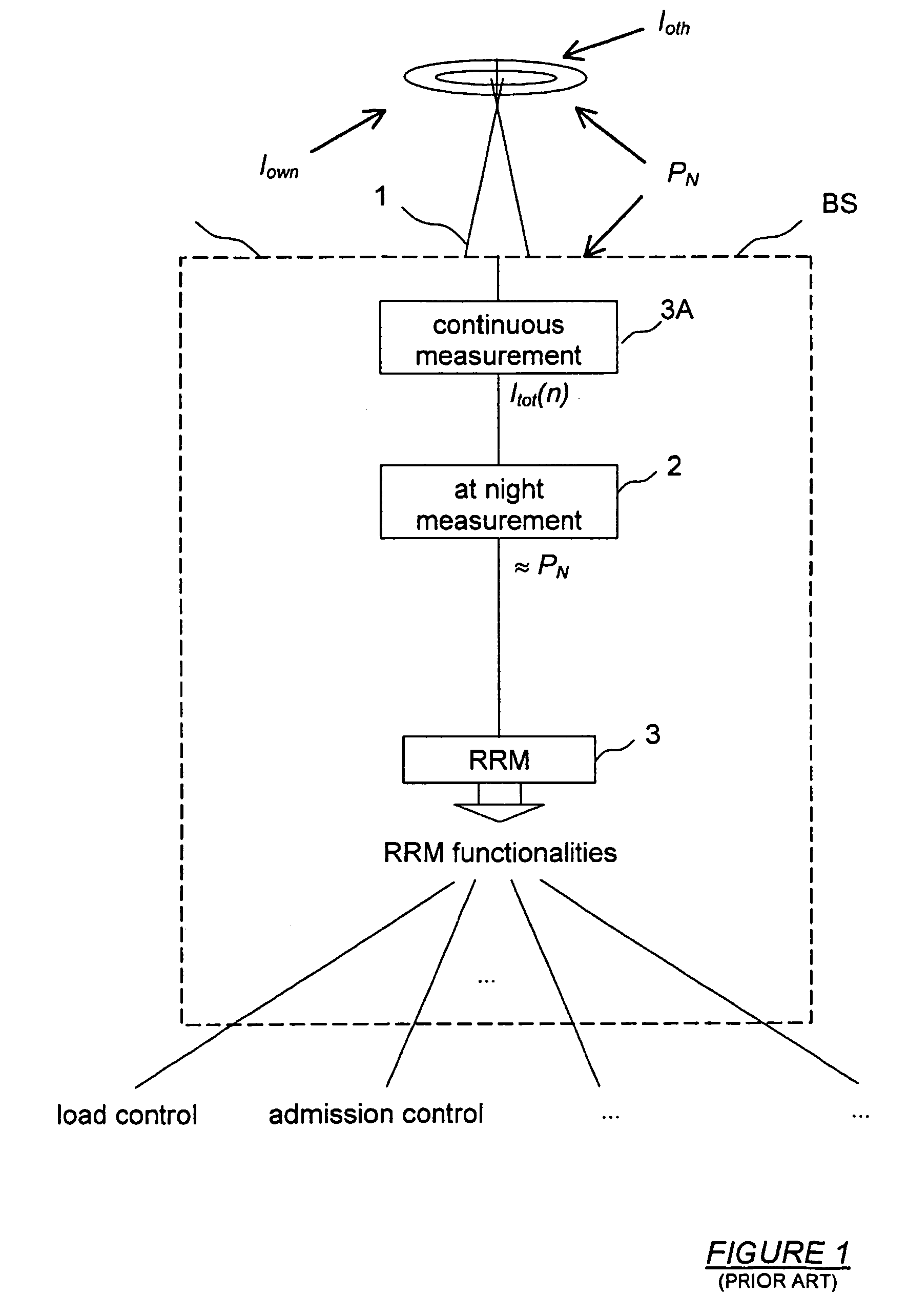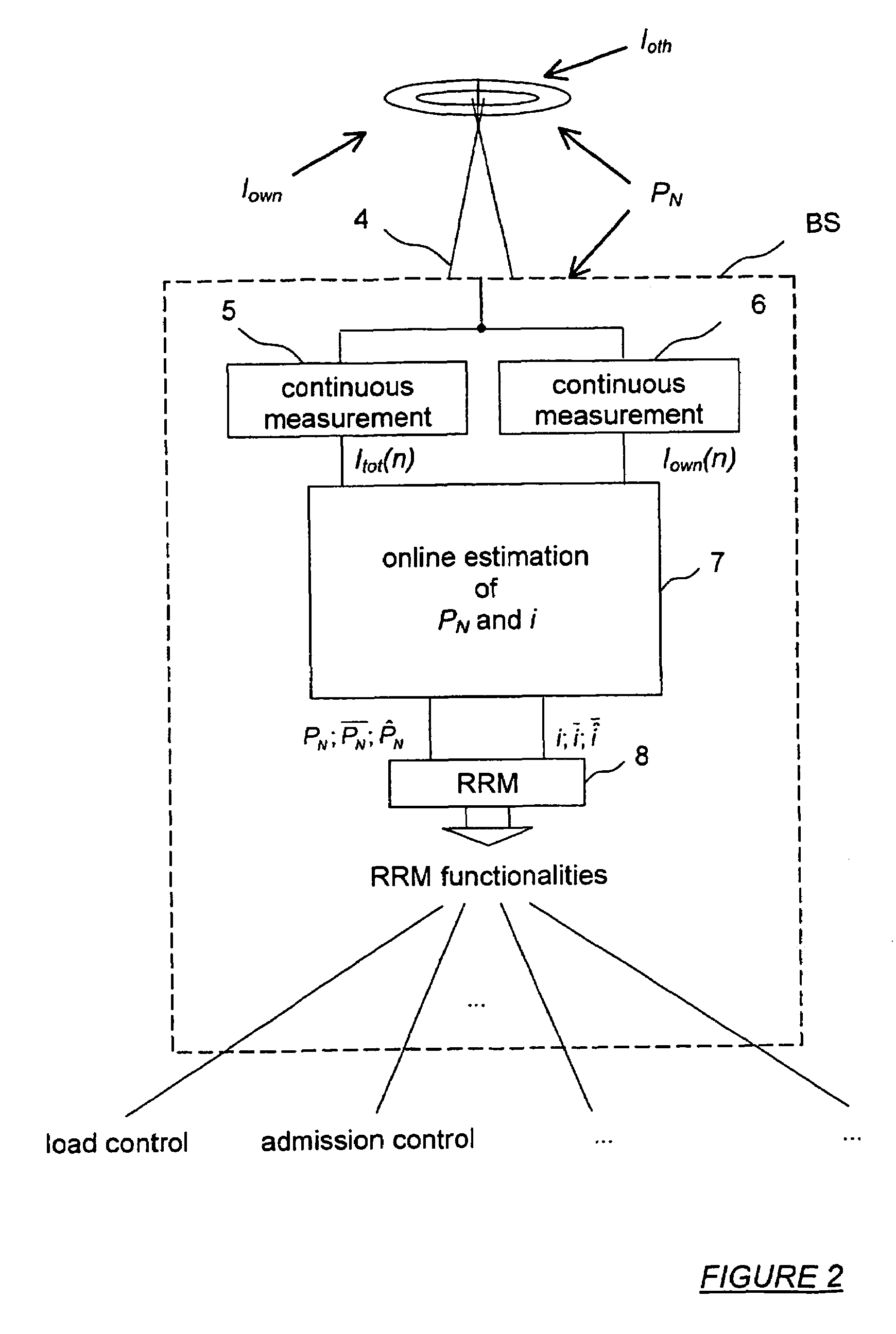Power based radio resource management
a radio resource management and power technology, applied in power management, transmission monitoring, wireless communication, etc., can solve the problems of affecting the performance of the system, and the prior art method does not allow to determine the interference ratio i of the other-to-own cell at all, so as to improve the radio resource management
- Summary
- Abstract
- Description
- Claims
- Application Information
AI Technical Summary
Benefits of technology
Problems solved by technology
Method used
Image
Examples
Embodiment Construction
[0040]FIG. 1 has been explained with reference to the prior art in order to explain the background of the invention. Therefore, the above explanations with regard to FIG. 1 apply to the invention as well, as far as nothing else is described hereinafter.
[0041]FIG. 2 shows a schematic diagram of a base station BS including an antenna 4 for communication between a radio network, such as a UMTS network utilizing wireless CDMA, and user equipment (not shown), e.g. mobile phones or any other mobile devices.
[0042]Such a base station BS covers a certain area in order to establish a wireless connection between the base station BS and the user equipment(s) being located within this area. Such an area is defined as a cell.
[0043]However, practically, there can be user equipment within a certain cell that is connected with the base station of another cell. Such user equipment causes interference with the signals that are intended for this specific base station BS. Furthermore, user equipment may...
PUM
 Login to View More
Login to View More Abstract
Description
Claims
Application Information
 Login to View More
Login to View More - R&D
- Intellectual Property
- Life Sciences
- Materials
- Tech Scout
- Unparalleled Data Quality
- Higher Quality Content
- 60% Fewer Hallucinations
Browse by: Latest US Patents, China's latest patents, Technical Efficacy Thesaurus, Application Domain, Technology Topic, Popular Technical Reports.
© 2025 PatSnap. All rights reserved.Legal|Privacy policy|Modern Slavery Act Transparency Statement|Sitemap|About US| Contact US: help@patsnap.com



